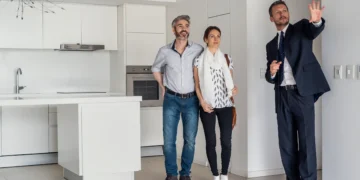Credit the nationwide doctor shortage, more literature surrounding mental and physical health, high medical-care costs, an aging population of baby boomers or any combination thereof, but people are taking serious strides to try improving their well-being themselves.
Enter biohacking, a trendy term for making changes to one’s biology through diet, lifestyle and other avenues in an attempt to combat issues relating to chronological age.
Dr. Justin Casey of Sinus Institute of Southwest Florida calls it “a broad spectrum of alternative interventions that range from things to better a person’s health, longevity and lifespan, all the way to things like interventional beauty.”
Some holistic practices, such as mindfulness, meditation, daily movement and plant-forward eating, have been around for ages and are backed by area wellness programs, such as Blue Zones Project–SWFL.
“We’re helping people be conscious of their aging so you can stay as mobile as possible and healthy as possible,” says Megan Greer, executive director of Blue Zones Project–SWFL.
Newer interventions, such as electromagnetic muscle stimulators, supplements, cryotherapy and light therapy, also are adding fuel to the biohacking health craze in Southwest Florida.
Trendy tech
Tree of Light Whole Body Rejuvenation Center in Naples offers an infrared medical sauna, a compression therapy system and therapeutic infrared light therapy services “to promote body rejuvenation and restoration on a cellular level,” according to its website, which bears the tagline “you can truly age in reverse.”
Dona Parker, Tree of Light owner, said patrons have visited after surgery to speed up the healing process, or to treat skin issues, such as psoriasis and eczema, with the help of an ARRC LED chamber.
“The beds have green, red and near-infrared light and also pulse between 40-80 hertz,” says Parker, adding that the lights interact with cells. “They are helping the mitochondria produce more energy. [It] also helps with the release of nitric oxide for metabolic health.
“Clients have been coming to me since I opened in 2019, many for healing and looking for ways to get off the many medications their doctors had them on for various reasons, and others just for general wellness,” Parker says. “The benefits have been huge for ones that have something measurable, and that’s why they continue even after they start to feel better, because they understand the power of it.”
Causes for concern
Personal metrics, commonly determined via wearable devices, are vital in deciding if biohacks are working, but doctors say analyzing numbers alone is where issues can arise.
“When you gather information you don’t really understand and then try to act on that information based on your understanding of medicine, you can end up with bad results,” says Raymond Wynne Phillips, retired gastroenterologist turned principal investigator at GI Pros Research in Naples.
Taking supplements—another type of biohacking—also can be troublesome without clinical guidance. “There’s an assumption that all supplements are safe because it’s not a pharmaceutical … but you can run into lots of trouble with supplements by mixing them with other supplements and medication,” Casey says.
Misleading marketing
Straits Research valued the global biohacking market size at an estimated $16.96 billion in 2022 and projected it to reach $80.57 billion by 2031.
“When things commercialize and capitalize, the trouble is you get salespeople giving you information. They highlight the positives without underscoring the negatives, and as a result, you get incomplete information,” Phillips says.
There are two sides to the industry, Casey says: “A side that’s altruistic and trying to promote better health and works well with mainstream medicine, and there’s a side that’s a little more for-profit, with what’s the latest fad and how it can get into the forefront of people’s minds to get them to buy it.”
Coming to conclusions
One way to combat confusing numbers and misleading information is to get a medical expert’s input. “Any type of biohacking should be done under the supervision of a doctor, so you know there are certain side effects,” Greer says.
These consultations also can help make up for scarce research. “One of the important points in what separates alternative and mainstream medicine is evidence to prove that it works and is safe,” Casey says. “Part of the reason why we don’t see tons of studies on these things is because there’s not necessarily billions of dollars to pay for them. But more and more, there are academic centers and other places doing good studies.”
Phillips suggested that consumers also can seek out research trials for emerging tools that fall under biohacking.
Future potential
A growing number of ways to assist a person’s well-being can positively affect area health care systems and people’s wallets.
“When people take better care of themselves, it relieves a lot of strain on our limited resources,” Greer says, adding that returning hospital visits can get costly. “We want to see fewer people ending up in medical bankruptcy because they’re able to take care of themselves. So, any way that we can find ways for people to improve their overall well-being that’s not totally cost-prohibitive benefits the entire community.”





